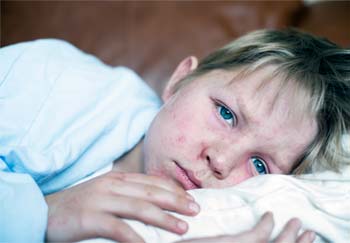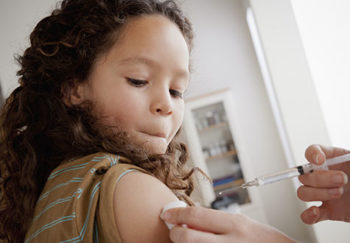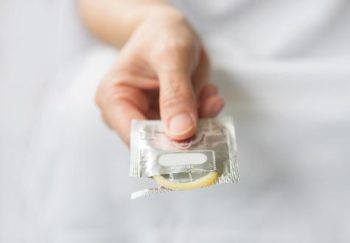
Reports about measles exposures and outbreaks continue to make headlines in 2019. In addition to the public health issue, legal challenges have drawn attention to the balance between personal rights and public safety.
Measles, a virus declared “eliminated” from the United States in 2000, actually saw 349 confirmed cases in 26 states and Washington, D.C. in 2018. That’s the second highest number of cases confirmed by the Centers for Disease Control and Prevention (CDC) since 2000 (2014 saw 667 confirmed cases). Across Europe, 365 cases were reported in 2018, with 35 deaths. There are ongoing outbreaks in France, Greece, Italy and Romania.
While all this certainly sounds scary, luckily, if you and your loved ones have already been vaccinated against measles, you’re pretty much in the clear. According to the CDC, “the best protection against measles is measles-mumps-rubella (MMR) vaccine.” If you’re an adult born in the US after 1957, it’s likely that you’ve received the necessary doses to achieve immunity against measles.
So, how did we get here? And should you be concerned?
But Wasn’t Measles Eliminated from the US?
“Elimination” doesn’t actually mean a complete lack of cases. The CDC defines “elimination” as “the absence of endemic measles virus transmission in a defined geographic area, such as a region or country, for 12 months or longer in the presence of a well-performing surveillance system.”
Basically, we have achieved an end to constant, year-round spread of the virus and have a strong system in place for reporting and tracking cases. But that’s in the U.S. There are many areas of the world where measles is still a common disease. Travelers sometimes bring the measles virus back with them.
How Measles Outbreaks Occur in the US
While there have been cases each year in the U.S. since 2000, generally, we’ve had less than 200 per year. These measles cases occur as a result of a non-immune person catching measles outside of the U.S. and then spreading it to other non-immune people while here. Outbreaks then occur in communities with groups of unvaccinated people.
“Measles has one of the highest attack rates of any infectious disease that we know of,” says Sarah Boggs, MD, a UVA pediatrician who is board-certified in infectious diseases. “If you are unvaccinated and you are in a room with someone with measles, you are going to get it. It is very, very contagious.”
Measles can spread to others through the air when an infected person coughs. It lingers in the air for some time afterward. It is so infectious that, according to the CDC, “if one person has it, 90 percent of the people close to that person who are not immune will also become infected.”
Like so many diseases, it’s not clear what you have right away. “You start with a cough and runny nose and goopy eyes, but so can 100 other cold viruses … It happens before you get the rash. That’s the most infectious time, and you can be infectious for about 3 weeks,” comments Boggs. The classic measles rash follows the cold-like symptoms a few days later, spreading from the head to the whole body.
But Measles Isn’t a Big Deal … Right?
“People think of measles as ‘oh, you get a rash, and then you get better,’ but if you get measles, even in the U.S., there is a high risk of death,” states Boggs. Although most people do survive measles, there can be serious long-term effects for survivors, especially in children under five years old. Ear infections that cause permanent hearing loss can occur. There is a form of brain swelling, called subacute sclerosing panencephalitis, that can develop seven to ten years after infection with measles.
And, a 2012 study found that measles may alter your immune system so that it “forgets” how to fight diseases to which you had immunity before infection with measles. Interestingly, the introduction of the measles vaccine saw an increase in childhood immunity to many other diseases in the U.S. population as well. It seems that reducing the number of measles infections also reduced the possibility of immune systems forgetting how to combat other diseases.
What About Herd Immunity?
“Herd immunity” is a kind of indirect protection against infection. When a large population becomes immune to a disease, the lack of circulating infection provides some protection for individuals in that population who are not immune or can’t receive the vaccine. With measles, however, it’s different. “Because measles is so contagious,” states Boggs, “even a single infected person can start a virus spreading through a community where there are unimmunized individuals. So, herd immunity is less protective.”
Want to Know More About Measles Prevention?
Check out our measles FAQs.
So, the best way to protect yourself and your loved ones is to make sure that your vaccinations are up-to-date. And if you’re an adult who has not been vaccinated, it’s still possible to get the vaccine and protect yourself. The CDC states that adults who aren’t immune to measles should receive at least one dose of the MMR vaccine. UVA has gone a step further and recommended that adults should make sure to receive a second dose if they are a healthcare worker, a college student or an international traveler.
“One measles vaccine, and you’ve got 95 percent protection. For children, a second dose of the vaccine is important to both boost the amount of protection you receive and to ensure that the protection is long-lasting,” agrees Boggs. All you need to do is have a conversation with your healthcare provider to get started.
What About the Risks of Harm from Vaccines?
“Any time you talk about a vaccine, you have to talk about the risks. The biggest risks, for any vaccine, are going to be a little bit of low-grade fever, a little soreness at the injection site. Maybe for infants, a little fussiness for a day or two. And those are really the biggest risks,” says Boggs.
“There is a very, very small risk of an allergic reaction that may occur in 1 in 100,000 people, but they’re incredibly rare.”
And Boggs reminds us that the study claiming that there was a link between vaccines and autism was debunked long ago. “I always encourage parents of patients to bring me resources that they have read that they are concerned about so we can review it together.”
What Now?
If you’re vaccinated and your loved ones have been vaccinated, there is very little to worry about. The CDC does recommend that if you are exposed to someone with measles, you should check in with your healthcare provider immediately to confirm your immunity or decide on next steps. (Rarely, vaccinations don’t result in full immunity.)
Unsure if You’re Vaccinated?
Get evaluated by a UVA primary care provider: Schedule an appointment.
If you’re unsure about your vaccination status, look for your childhood immunization records or check in with your providers. They may recommend another dose of the vaccine or can test you for immunity. Receiving another dose of the vaccine if you’re already immune is not harmful. If you can’t get the vaccine (the CDC has a list of reasons that may prevent you from receiving it), have a conversation with your healthcare provider on the best methods of protecting yourself.
If you believe you have been infected with measles, contact your healthcare provider immediately for evaluation.
We originally published this in January 2019 and updated it in May 2019.


As a retired pediatric nurse this is a very well done article and I just hope those reluctant parents will read this and take it to heart. They are not doing their child any good by not having them vaccinated.
Amazing that most of those with measles have been vaccinated. Works great!
Hey Terry: Thanks for your reply! I think if you review the post and some of the supporting materials, you’ll find that they don’t in fact claim that most of the folks catching measles have already been vaccinated, but in fact the opposite.
For instance, in the post itself, it states “These measles cases occur as a result of a non-immune person catching measles outside of the U.S. and then spreading it to other non-immune people while here. Outbreaks then occur in communities with groups of unvaccinated people.” Non-immune folks won’t have received the vaccine in their life (otherwise, they would be immune).
If you click through the links to the CNN article and the CDC webpage, you should see that the overwhelming majority of cases are in people that have not been vaccinated, or their vaccination status is not verified. Additionally, although in a tiny minority of those cases the person had received the vaccine, it was only one dose. As with most vaccinations, you need to keep up with your schedule of boosters to ensure full immunity. Otherwise, the vaccine may not work or doesn’t work to the fullest extent.
I hope that clears up any confusion, thanks for reaching out!
According to study the United States has seen more measles diagnoses in the first three months of 2019 than in all of 2018. CDC said that individuals who have received two doses of the measles-mumps-rubella (MMR) vaccine and are exposed to high-risk settings (such as educational institutions, international locations, and healthcare organizations) immune. For those who will not be in a high-risk setting, just one dose of MMR vaccine considered them as an immune. The most important factor is contacting your healthcare provider immediately for evaluation.
I would love for the CDC to report ( and states as well) on viral shedding as this is the cause of many outbreaks in the US. With the media eye on measles bc if inflammatory fear statements seems to me outbreaks never stopped we are just hearing about it more bc Merck needs to sell their product. Measles is not deadly but what we are doing by destroying herd immunity is deadly, leaving those very young and older susceptible to this disease. Vitamin A!!!!!!!! My god this is insane. There is no tracking of vaccine meditated infection and when it is known it’s construed as ‘not from the community’ or whatever term they use. A live virus vaccine will never ‘eradicate’ A disease especially since there are several strains and we don’t live in a bubble. Time to stop blaming ‘unvaccinated’ and get the real nuances in reporting on vaccines and communicable disease. This fear is nauseating. We have never been MORE vaccinated than we are now. Never. Too many look at this issue in a vacuum. What did we ever do in the 70’s when many were not vaccinated. Early 80’s too. People weren’t dying. It’s time to wake up to the realities. Vaccines are dangerous. Measles is not. Measles mortality is also NIT 1:1000! Back on the 60’s It’s was more like 1:10,000. Not everyone reported their case bc it was the measles. Like chicken pox! 4 million children contract measles in any given year. 400 died. I do wonder who those children were and what their vitamin A status was. Now we are killing just as many with the vaccine per year. Nice trade off!
Hey Smkk: Thanks for sharing! I highly encourage you to review the CDC’s section on measles. For instance, although you say “only” 400 children died in the U.S. per year, you’re not taking into account the the long-term individual and societal effects of such issues as encephalitis and the loss of previously acquired immunity.